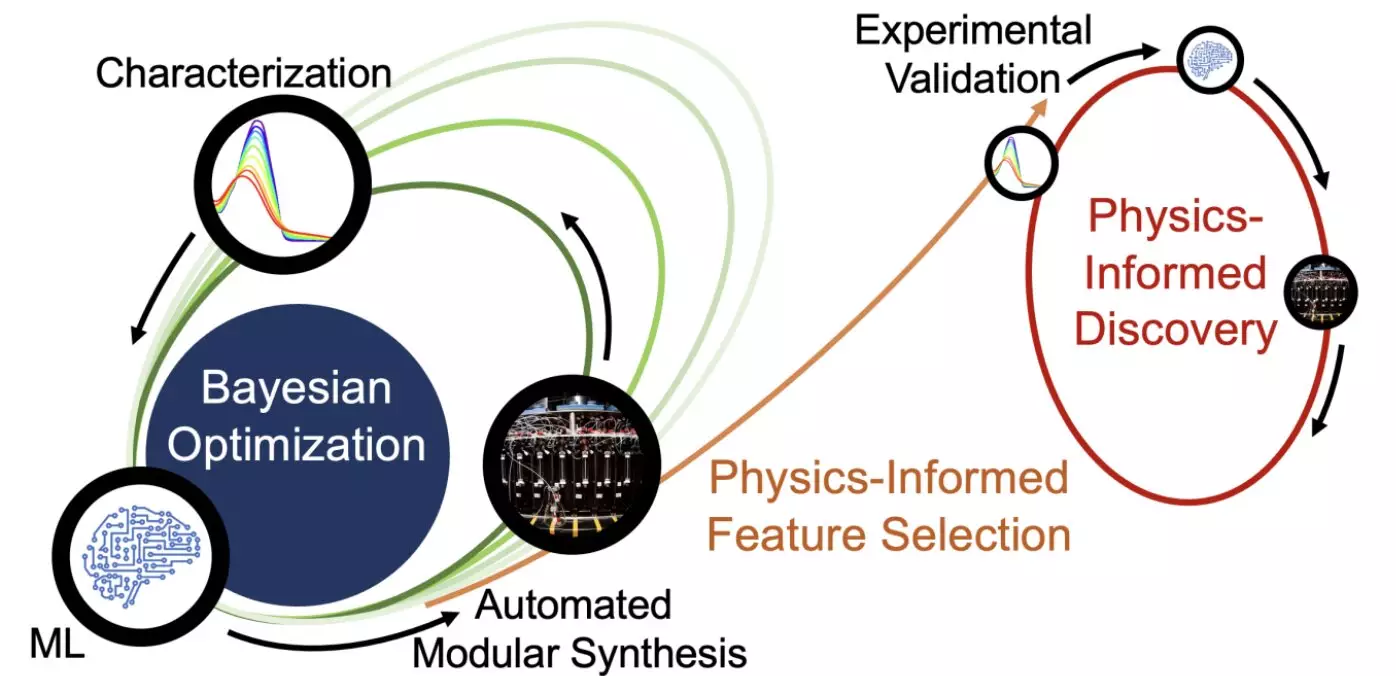Artificial intelligence has rapidly gained recognition as a transformative force across various scientific fields, yet it is not without its shortcomings. A substantial obstacle remains in the form of the “AI black box” phenomenon: many AI systems are adept at making predictions or suggestions, but they often lack the ability to elucidate the rationale behind their decisions. This limitation poses a serious challenge in fields like chemistry, where understanding the underlying factors driving molecular design is critical. In a groundbreaking study conducted by an interdisciplinary team at the University of Illinois Urbana-Champaign, researchers have managed to circumvent this barrier, thus bringing clarity to the murky waters of AI-driven chemical advancement.
The research initiative spurred by this team aimed to tackle the persistent hurdles faced by organic solar cell technology. Traditional silicon-based solar panels, while effective, come with inherent limitations—particularly their bulkiness and rigidity. Conversely, organic solar cells boast the potential for lightweight, flexible applications, yet their commercialization has been stymied by stability issues. Light-harvesting molecules employed in organic photovoltaics are prone to degradation when exposed to light, undermining their functionality. This deficiency has been a thorn in the side of researchers since the 1980s.
The Illinois research team’s strategy involved an innovative method termed “closed-loop transfer.” At its core, this approach merges artificial intelligence with automated chemical synthesis and rigorous experimental validation to produce a seamless feedback loop of data and insights. Over multiple iterations, AI algorithms suggested various chemical modifications aimed at enhancing the photostability of light-harvesting molecules. This dynamic process allowed the researchers to synthesize 30 new chemical candidates through five distinct rounds of experimentation.
Co-led by Professor Martin Burke and his colleagues from various disciplines, this study has redefined the conventional AI process. Instead of merely landing on an optimized product, the research aims to dissect and understand the chemical principles that drive molecular stability. As chemistry professor Nicholas Jackson aptly put it, the research transitions AI from a “black box” into a “transparent glass globe,” allowing scientists to gather valuable insights about what makes these newly developed molecules four times more stable than their predecessors.
The culmination of their work is a dual-layered system where one subset of algorithms relentlessly scrutinizes the synthesized molecules to gauge their photostability while the AI system is simultaneously optimizing the chemical candidates. This method of knowledge extraction is what distinguishes this approach from traditional AI applications in chemistry, where the focus is mostly on optimization without any deep exploration of underlying principles.
One of the most notable takeaways from the study is the pivotal shift from a structure-only focus to a functional perspective. Traditionally, researchers have predominantly concentrated on the structural aspects of chemical compounds; however, this research emphasizes understanding function as well. Burke’s team has successfully integrated modular chemical approaches with AI-driven feedback loops, enhancing the capacity to explore not just the “what,” but the “why” regarding molecular stability.
By investigating the identified factors that contribute to the stability of specific light-harvesting molecules, the team was able to confirm that solvent choice plays a crucial role; selecting appropriate solvents can significantly enhance photostability. This knowledge allows for a more straightforward screening process for new chemical candidates, as researchers can now harness quantifiable insights while searching through what used to be an impenetrable chemical space.
The implications of this research are profound. It not only demonstrates that AI’s capabilities extend beyond mere optimization but also suggests that future applications could encompass a broader range of material systems. As co-researcher Charles Schroeder points out, there is a vision for an intuitive AI interface that allows researchers to specify their desired chemical functions, prompting the AI to generate testable hypotheses based on its newly acquired insights. This would represent a significant evolution in the way scientists approach material discovery and synthesis.
Ultimately, this multidisciplinary endeavor has illustrated the incredible potential of AI-driven research methodologies. As AI technology continues to mature, it is likely that we will see more innovative applications emerge, contributing to advancements in fields such as renewable energy and advanced materials science. The groundwork laid by this team not only enhances our understanding of chemical resilience but also paves the way for future explorations of how AI can demystify complex scientific challenges.


Leave a Reply